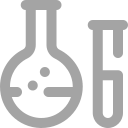
Product Description
Sodium phenylbutyrate is an inhibitor of HDAC and endoplasmic reticulum (ER) stress, used in cancer and infection research.
IC50 & Target: HDAC[1], ER[3]
In Vitro: Sodium phenylbutyrate is an inhibitor of HDAC, inhibits the growth of NSCLC Cell Lines at 2 mM. Sodium phenylbutyrate in combination with ciglitizone results in enhanced growth arrest of cancer cells[1]. Sodium phenylbutyrate (0-5 mM) inhibits ASFV infection in a dose-dependent manner. Sodium phenylbutyrate also inhibits the ASFV late protein synthesis and disrupts the virus-induced H3K9/K14 hypoacetylation status. Sodium phenylbutyrate and enrofloxacin act synergistically to abolish ASFV replication[2]. Addition of bafilomycin A1 results in accumulation of LC3II, whereas Benzenebutyric acid (4-PBA) substantially reduces this accumulation. LPS decreases the level of p62, whereas Benzenebutyric acid reverses this decrease upon LPS stimulation for 48 h. The percentage of cells with LPS-induced AVOs is increased at 48 h, whereas Benzenebutyric acid significantly reduces this percentage. Specifically, the percentage of cells with AVOs decreases from 61.6% to 53.1% upon Benzenebutyric acid treatment, supporting that Benzenebutyric acid inhibits LPS-induced autophagy. As a positive control for autophagy inhibition, bafilomycin A1 is used. The percentage of cells with LPS-induced AVOs is reduced by bafilomycin A1 treatment. The decreased OC area and fusion index observed after Benzenebutyric acid treatment are not observed with knockdown of ATG7. Inhibition of NF-κB using BAY 11-7082 and JSH23 reduce the LC3 II level upon LPS stimulation and completely abolish the inhibitory effect of Benzenebutyric acid on LPS-induced effects[3].
In Vivo: LPS induces significant bone loss and decreases bone mineral density (BMD), bone volume (BV/TV), and trabecular thickness (Tb. Th) compared with PBS alone, whereas trabecular space (Tb. Sp.) is increased. Sodium phenylbutyrate attenuates LPS-induced bone loss. Treatment with Sodium phenylbutyrate increases BMD, BV/TV, and Tb. Th. compared with LPS alone, in addition to decreasing the enlargement of Tb. Sp., but no change is observed when mice are treated with Sodium phenylbutyrate alone. OC.S/BS as assessed by TRAP staining is also significantly reduced when Sodium phenylbutyrate is administered to LPS-treated mice. However, OC.N/BS tends to decrease, although not with statistical significance, when mice are treated with Sodium phenylbutyrate and LPS. These results indicate that the effect of Sodium phenylbutyrate on OC from LPS-treated mice is to reduce its size rather than number. Consistent with these findings, a marker of bone resorption in vivo, serum CTX-1 which is elevated by LPS treatment is decreased when Sodium phenylbutyrate administered to LPS-injected mice. However, co-treatment with Sodium phenylbutyrate do not significantly affect the levels of serum ALP and osteocalcin, 2 markers of bone formation in vivo, compared with LPS alone. Sodium phenylbutyrate also reduces the LPS-induced rise in serum MCP-1, indicating that Sodium phenylbutyrate decreases systemic inflammation induced by LPS[3].

Information
CAS No1716-12-7
FormulaC10H11NaO2
Clinical Informationclinicalinformation
PathwayEpigenetics
Cell Cycle/DNA Damage
TargetHDAC
HDAC

Specifications
Purity / Grade>98%
SolubilityH2O : 23.5 mg/mL (126.22 mM; Need ultrasonic and warming)
Smilessmiles

Misc Information
Alternative NamesSodium 4-phenylbutyrate;TriButyrate
Observed Molecular Weight186.18